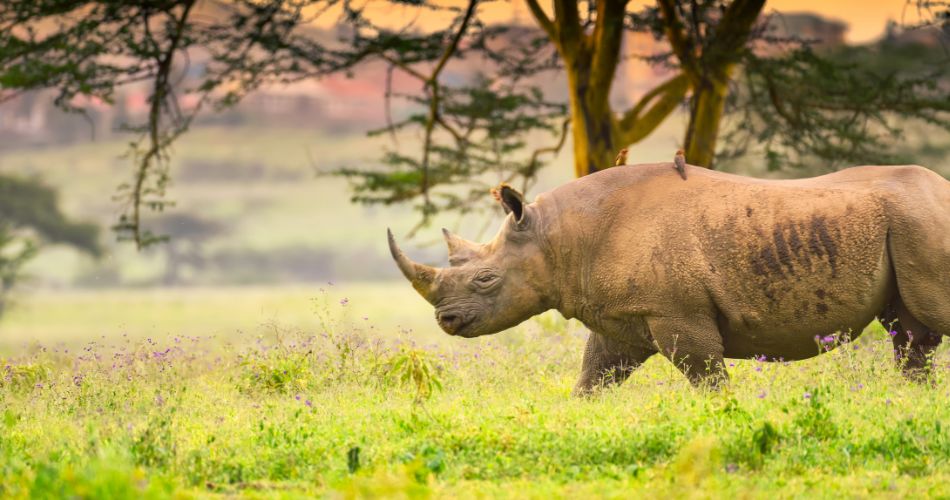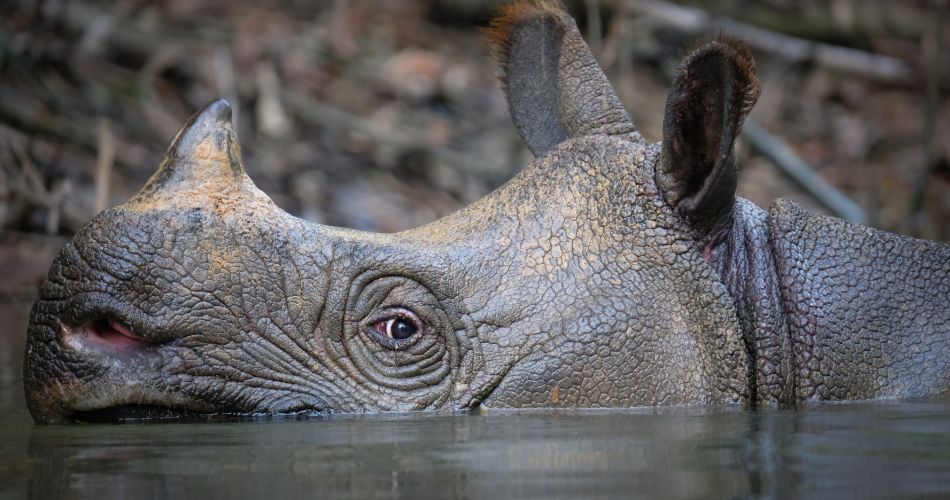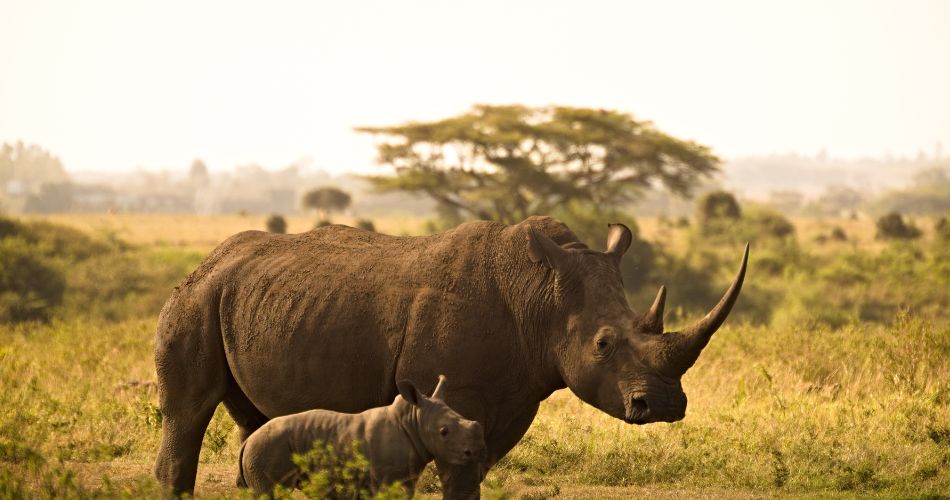Save The Rhino Day is observed annually on May 1, serving as a global call to action to raise awareness about the plight of rhinoceroses and the urgent need for their conservation. This day highlights the threats these majestic creatures face, including poaching and habitat loss, and encourages efforts to protect and preserve their populations. 1
History of Save The Rhino Day
The origins of Save The Rhino Day trace back to 2010, when conservationist Simon Jones established the observance to spotlight the critical challenges rhinos face and to galvanize global support for their protection. The day was created to educate the public about the importance of rhino conservation and to promote initiatives aimed at safeguarding these endangered species.
Over the years, Save The Rhino Day has grown into an international movement, with various organizations, zoos, and wildlife groups participating in events and campaigns to support rhino conservation efforts. The day serves as a platform to share success stories, raise funds, and advocate for stronger protections for rhinos worldwide.
Interesting facts about rhinos

Rhinos aren’t just prehistoric-looking creatures thundering across savannas — they’re living legends, steeped in myth, biology, and a lot of personality. From “crashes” of rhinos to horn myths and celebrity rhinos on European tours, here’s everything you never knew you needed to know about these magnificent beasts.
- Not Black, Not White — Just Rhino
Let’s clear this up: white and black rhinos are basically the same color — gray. The “white” in white rhino is a mistranslation of the Afrikaans word “wyd,” meaning “wide,” referring to the shape of their mouths. Early English settlers misheard it, and the name stuck. Meanwhile, black rhinos probably got their name from the mud they wallow in. Color-wise? Both are just… gray. - Herbivore Heroes
Rhinos are plant-powered. These herbivores spend most of their day munching on grasses, leaves, branches, and shoots — sometimes consuming up to 120 pounds a day! Unsurprisingly, this results in equally impressive output: a white rhino can produce up to 50 pounds of dung per day. And they use it for more than just waste — rhinos actually communicate through poop! Each pile, or “midden,” is like a social media post with scent cues revealing age, sex, and even readiness to mate. 2 - Poo, Grunts, and Snorts: Rhino Talk
Rhinos aren’t just silent tanks. They grunt, snort, squeal, and (yes) leave smelly messages. Their dung piles aren’t random — they’re full of olfactory info used to mark territory and communicate with neighbors. - Small Brains, Big Moves
Despite having brains that are surprisingly small for their body size, rhinos are smart in their own way. They can recognize territories, return to favorite paths, and even develop bonds with other animals — including oxpeckers, nicknamed “rhino guards.” These tick-eating birds alert rhinos to danger and act as early warning systems. - Speed and Strength
Don’t let their size fool you. Rhinos can run at speeds up to 40 miles per hour. That’s faster than most humans could ever dream of — so if a rhino starts running, you’d better hope it’s not toward you! 3 - Who’s Their Family?
Surprisingly, rhinos are closely related to horses, zebras, and tapirs. They’re part of a group called odd-toed ungulates (perissodactyls), and their footprints — three large toes — can even resemble the shape of a club in a deck of cards. - A Nose for Identity
The name “rhinoceros” comes from the Greek words rhino (nose) and ceros (horn), which makes sense — their iconic horn is what defines them. But unlike antlers or bones, rhino horns are made entirely of keratin — the same material as human fingernails and hair. The horn isn’t attached to the skull and grows continuously, just like your nails. It’s essentially a tightly packed clump of hair! - Meet the Family
There are five living species of rhino: white, black, greater one-horned (Indian), Javan, and Sumatran. Three of them — black, Javan, and Sumatran — are critically endangered. Poaching and habitat loss are pushing them to the brink, with fewer than 100 Javan and Sumatran rhinos left in the wild. The white rhino, the largest species, can weigh over 5,000 pounds — nearly as much as a small SUV. At the other end of the scale, the Sumatran rhino barely weighs a ton and is the only living rhino species with body hair. - Rhinos Can Swim!
Yes, at least some can. Greater one-horned rhinos are excellent swimmers and can even dive. Meanwhile, their African cousins prefer shallower mud wallows, but still enjoy a good splash.

- Rhino Babies and Solo Dads
Rhino pregnancies last a whopping 15–16 months, with calves staying close to their mothers for years. But dads? Nowhere to be seen. Male rhinos usually vanish after mating and don’t take part in raising their offspring.
One famous baby rhino is Andatu, born in 2012 in Indonesia — the first Sumatran rhino born in captivity there. His name is a blend of his parents’ names (Andalas and Ratu) and means “A Gift from God.”

- Rhinos Through Time
Rhinos have roamed the Earth for millions of years. Their ancestors ranged from tiny dog-sized creatures to the colossal Paraceratherium, the largest land mammal ever — as tall as a three-story building and weighing up to 20 tons!
In Austria, a woolly rhino skull once mistaken for a dragon’s was used as the model for a medieval statue — that’s how ancient and mythic rhinos really are. - Horn Myths and Harsh Truths
Rhino horn has been falsely praised in traditional medicine for centuries, claimed to cure everything of fevers to demonic possession. In reality, it has zero proven medical properties. If rhino horn really worked, we could just chew our nails instead — and maybe save a species. - Clara the Touring Rhino
One of history’s most famous rhinos was Clara, an Indian rhino who toured Europe in the 1700s like a rock star. She met royals, was painted in portraits, and even rubbed her skin with fish oil. Clara’s story is immortalized in the book Clara’s Grand Tour. - Rhinos have an incredible sense of smell — better than their eyesight
Despite their massive size, rhinos actually have poor vision. They might not notice a still human standing just a few dozen meters away! But their sense of smell is incredibly sharp, helping them detect other animals, threats, and territory markers from impressive distances. - Rhinos can be surprisingly gentle
Tough and armored on the outside, but tender at heart — especially when it comes to their calves. Mother rhinos nudge their babies lovingly, teach them how to wallow in mud, and fiercely guard them from danger with a heartwarming protectiveness. - Male and female rhino horns serve different purposes
Both males and females have horns, but they use them differently. Males often use their horns to fight rivals for territory or mates, while females primarily use theirs to defend their young. Interestingly, female horns tend to be thinner and longer than those of males. - Rhinos love a good mud bath
Rhinos don’t just roll in the mud for fun — it’s survival! Mud helps cool their bodies under the hot sun, protects their thick skin from sunburn, and acts as a natural insect repellent against parasites. - Rhinos can live up to 40–50 years
In the wild, rhinos typically live around 35–40 years. However, under the careful protection of zoos and wildlife reserves, some individuals can live over 50 years! - Rhinos hate surprises
Highly territorial and easily startled, rhinos are known for charging at unexpected sounds or movements — sometimes without clearly seeing what they’re rushing toward. It’s less about aggression and more about instinctive defense. - Celebrate World Rhino Day!
Every year on September 22, people around the globe raise awareness for rhino conservation. Want to help? Visit rhinos.org/world-rhino-day and find out how.
Rhinos are more than ancient, armored herbivores. They are fast, fascinating, funny, and fiercely unique. They’re symbols of strength, survivors of deep time, and tragically, victims of human greed. But with awareness and action, there’s still hope for their future.
Why is Safe The Rhino Day important?
Rhinos are among the most endangered animals on the planet, with several species facing the threat of extinction due to poaching and habitat destruction. Poachers target rhinos for their horns, which are highly valued in illegal markets, leading to a significant decline in rhino populations. Additionally, the loss of natural habitats due to human activities further exacerbates the challenges these animals face.
Save The Rhino Day is crucial because it brings global attention to these issues and mobilizes support for conservation initiatives. By educating the public, advocating for stronger wildlife protection laws, and supporting conservation programs, this day plays a vital role in the ongoing efforts to ensure the survival of rhinos for future generations.
- Raises awareness about the critical threats facing rhinos
- Encourages public support for conservation initiatives
- Promotes education on the importance of biodiversity
- Supports fundraising efforts for rhino conservation
- Advocates for stronger wildlife protection laws
How to Observe Save The Rhino Day
Observing Save The Rhino Day can be both educational and impactful. One way to participate is by learning more about rhinos and the challenges they face through documentaries, books, and reputable online resources. Sharing this knowledge with friends and family can help spread awareness and inspire others to take action.
Another meaningful way to observe the day is by supporting organizations dedicated to rhino conservation. This can include making donations, adopting a rhino through symbolic programs, or participating in fundraising events. Engaging in community activities, such as hosting informational sessions or organizing local events, can also contribute to the cause and foster a collective effort to protect these magnificent animals.
- Educate yourself and others about rhino conservation
- Support reputable wildlife organizations through donations
- Participate in or organize fundraising events
- Advocate for stronger wildlife protection policies
- Share information on social media to raise awareness
Save The Rhino Day Dates Table
| Year | Date | Day |
|---|---|---|
| 2026 | May 1 | Friday |
| 2027 | May 1 | Saturday |
| 2028 | May 1 | Monday |
| 2029 | May 1 | Tuesday |
| 2030 | May 1 | Wednesday |
- https://wildlifearoundtheworld.com/tag/save-the-rhino-day/[↩]
- https://rhinos.org/blog/25-things-you-might-not-know-about-rhinos/[↩]
- https://www.savetherhino.org/rhino-info/rhino-kids/fun-facts/[↩]
Subscribe to our newsletter and never miss a holiday again!

